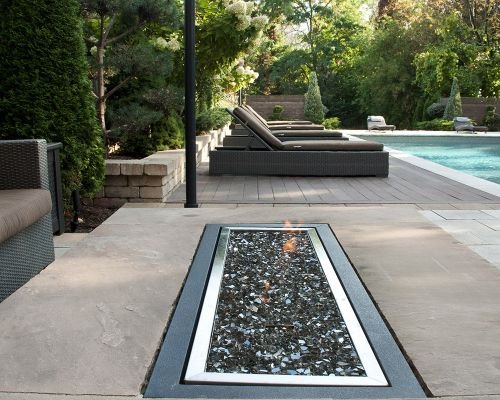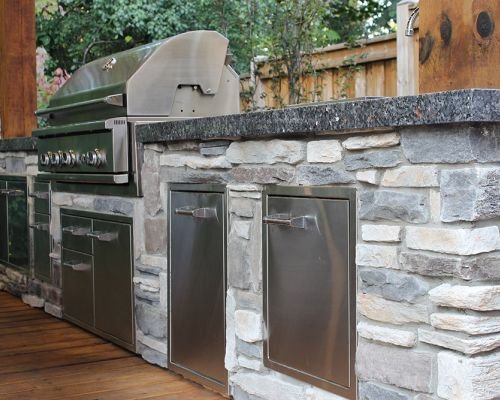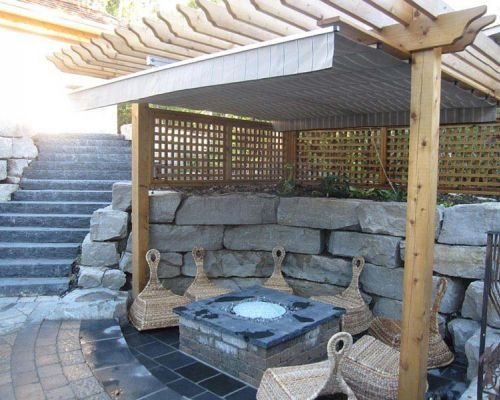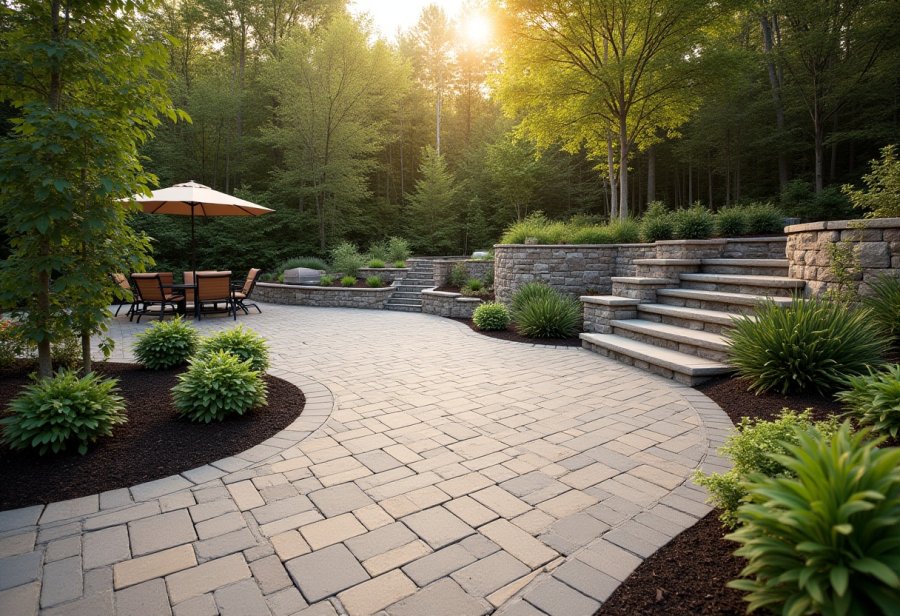Imagine transforming your Toronto yard into a breathtaking outdoor retreat that seamlessly balances beauty with sustainability. How can landscape design achieve this harmonious blend, especially in a city with such climatic extremes? This work explores the evolution of Toronto’s outdoor spaces—from traditional, high-maintenance lawns to eco-friendly landscapes that support local biodiversity and conserve resources. By integrating native plants, water-efficient features, and sustainable materials, homeowners can create vibrant, resilient gardens that thrive naturally, year-round. But the journey isn’t just about aesthetics; it’s about crafting landscapes that serve both personal and environmental needs, reducing maintenance while promoting ecological health. As technology advances and awareness deepens, future designs will incorporate smart irrigation and innovative eco-solutions, making sustainability effortless. Could this approach redefine urban outdoor living—making beauty and responsibility not just compatible but inherently intertwined? This exploration invites readers to envision a greener, more resilient Toronto backyard landscape.
Transform Your Toronto Backyard with Expert Landscaping Solutions
Looking to elevate your outdoor space? Toronto Landscape & Design (TLD) offers exceptional services including natural stone installations, water gardens, irrigation systems, and retaining walls to create the perfect backyard oasis. Our award-winning designers take everything into consideration, ensuring each project seamlessly blends functionality and beauty. Whether you’re dreaming of a tranquil water feature or durable retaining walls, TLD is committed to transforming your Toronto property into a stunning retreat. For a custom backyard makeover, contact us today at 1.416.644.0499 or via email at mike@torontolandscapedesign.com. Let our expertise bring your outdoor vision to life!

Reimagining Toronto Yards into Lush, Eco-Friendly Retreats
Transforming Toronto yards into beautiful, sustainable outdoor retreats has become more than just a trend—it reflects a shift in how homeowners and designers view outdoor living. Today’s outdoor spaces are no longer simple lawns or ornamental gardens; they are personalized environments that blend aesthetic appeal with environmental responsibility. Creating these retreats means designing landscapes that support local ecosystems, conserve resources, and withstand Toronto’s seasonal extremes.
This movement toward sustainability aligns with a broader awareness of environmental issues and a desire for resilience in urban landscapes. Native plants, eco-friendly materials, and water-efficient features now serve as the foundation of thoughtful landscape design. These choices not only reduce the ecological footprint of outdoor spaces but also ensure they remain vibrant and functional year-round, despite Toronto’s cold winters and humid summers.
Understanding what homeowners want is essential. Whether it’s a peaceful garden for quiet mornings, a lively area for gatherings, or a low-maintenance yard for busy lifestyles, each vision shapes the final design. Listening carefully helps landscape professionals craft customized plans that balance personal style with ecological principles, transforming ordinary yards into retreats that are both welcoming and environmentally responsible.
Designing with sustainability in mind involves integrating natural elements seamlessly. Native plants, rain gardens, permeable paving, and other eco-friendly features help manage stormwater, reduce runoff, and conserve water. These strategies support biodiversity, lower maintenance costs, and create resilient landscapes that can adapt naturally to Toronto’s climate fluctuations.
The shift toward eco-conscious outdoor spaces is also part of a larger movement to make Toronto more sustainable. By emphasizing harmony with nature, landscape design now prioritizes climate-adapted plants and environmentally friendly materials. This approach not only enhances visual appeal but also contributes to urban biodiversity and helps improve air quality.
Ultimately, transforming yards into eco-friendly retreats is about more than aesthetics. It’s a commitment to creating outdoor spaces that are beautiful, functional, and responsible. When designed thoughtfully, these landscapes become vibrant havens that enhance quality of life and support Toronto’s ongoing efforts toward a greener, more resilient city.
Tracing the Evolution of Sustainable Landscaping in Toronto
Toronto’s landscape design has come a long way, evolving in response to growing environmental awareness and the need for more resilient outdoor spaces. In earlier decades, yards mostly consisted of neatly trimmed lawns and ornamental gardens, with little thought given to ecological impact or water conservation. These traditional designs prioritized aesthetics over sustainability, often relying on chemical treatments and high-maintenance plantings that demanded frequent upkeep.
As environmental concerns gained prominence, designers and homeowners began seeking greener alternatives. Native plants, well-adapted to Toronto’s climate, gained popularity because they require less water, fertilizers, and chemical interventions. Incorporating these species supported local biodiversity—providing habitat for native insects and birds—while also reducing maintenance costs. This shift marked a move toward landscapes that are both beautiful and environmentally responsible.
Toronto’s harsh climate has played a crucial role in shaping sustainable landscape practices. Winters can be severe, and summers humid, making climate-appropriate plant selection essential. Native species naturally thrive in the local soil and weather conditions, offering reliable, long-term resilience. This approach minimizes the need for supplemental watering and chemical inputs, making gardens easier to maintain and more sustainable over time.
Eco-friendly materials have also become integral to Toronto’s landscape trends. Recycled stone, sustainably sourced wood, and permeable pavers help reduce environmental footprints while adding visual interest. These materials support stormwater management and lower the environmental impact of construction, aligning aesthetic appeal with ecological responsibility. The focus on durability and sustainability has driven innovations that balance beauty with function.
The broader societal shift toward sustainability is reflected in the increasing use of stormwater management features like rain gardens, permeable pavements, and rain barrels. These elements help control runoff, prevent erosion, and conserve water, creating landscapes that are as practical as they are attractive. Such features support Toronto’s efforts to improve urban air quality and promote biodiversity, turning yards into ecological assets.
Today, landscape design continues to innovate by integrating natural elements with emerging technologies. Smart irrigation systems, climate monitoring sensors, and eco-conscious materials are becoming more common, making sustainable practices more accessible. This ongoing evolution emphasizes resilience and adaptability, ensuring outdoor spaces can withstand Toronto’s seasonal extremes while maintaining their visual and ecological appeal.
The landscape practices of the past laid the groundwork for a future where beauty and sustainability go hand in hand. Toronto’s ongoing commitment to eco-conscious design reflects a broader understanding that outdoor spaces are vital for urban health and residents’ well-being. As innovations continue, the city’s yards will remain vibrant, resilient, and environmentally supportive—proof that sustainable landscaping is not only possible but essential.

Fundamental Principles for Harmonizing Beauty and Eco-Conscious Design
Creating a beautiful and sustainable landscape starts with core principles that work together to produce a balanced outdoor space. Native plants are the foundation because they are naturally suited to Toronto’s climate, requiring less water, fewer fertilizers, and minimal maintenance. These plants support local ecosystems by providing habitat for native insects and birds, making the yard more resilient and environmentally friendly. When plants are well-adapted, they thrive naturally, reducing the need for chemical interventions and creating a vibrant, sustainable environment over time.
Designing for both beauty and function is essential. A thoughtfully planned yard should serve the homeowner’s lifestyle, whether that’s relaxing, entertaining, or gardening. Creating distinct zones—like a cozy seating area, a vegetable garden, or a play space—maximizes usability without clutter. Careful placement and plant choices ensure the space feels inviting and natural while maintaining low maintenance and ecological health. This balance allows homeowners to enjoy their outdoor retreats without excessive effort.
Eco-friendly materials play a significant role in sustainable landscaping. Recycled stone, sustainably sourced wood, and permeable pavers reduce environmental impact while adding visual interest. These materials help create a cohesive aesthetic that supports eco-conscious goals. Incorporating features like rain gardens and rain barrels naturally manages stormwater, conserving water and supporting your landscape’s health. When thoughtfully integrated, these elements enhance beauty and environmental responsibility simultaneously.
Water conservation remains a key focus. Using native plants combined with smart watering techniques and water-retentive soil amendments can significantly reduce water use. Permeable surfaces allow rain to soak into the ground instead of running off, helping prevent erosion and pollution. These strategies support long-term sustainability, lower utility bills, and lessen the ongoing workload for homeowners, making eco-friendly landscapes more practical and accessible.
Resilience is vital in Toronto’s changing climate. Selecting hardy, climate-appropriate plants and durable materials ensures the landscape remains attractive and functional year after year. These choices make the yard more resistant to seasonal extremes, from harsh winters to humid summers. Focusing on resilience allows landscapes to adapt naturally, reducing the need for repairs or replacements over time and preserving their beauty with less effort.
Natural elements can be seamlessly integrated to transform outdoor spaces into visual and ecological havens. Native plant gardens, water-efficient irrigation, and sustainable materials work together to create environments that are both captivating and eco-conscious. Emphasizing harmony with nature, designers can craft outdoor retreats that support biodiversity, improve air quality, and contribute positively to Toronto’s urban ecosystem, making sustainability a natural part of everyday outdoor life.
This approach demonstrates that beauty and sustainability are not mutually exclusive. When guided by strategic design principles, they complement each other perfectly. The goal is to craft outdoor spaces that are visually stunning, environmentally responsible, and tailored to the homeowner’s needs—spaces that will thrive in Toronto’s climate and serve as lasting, vibrant retreats that enrich both lives and communities.
By integrating these principles, homeowners can create landscapes that not only look stunning but also support local biodiversity and environmental health. To explore more about sustainable landscaping practices tailored to Toronto, consider visiting sustainable landscaping in Toronto. Embracing these strategies ensures your outdoor space remains both beautiful and eco-friendly for years to come.
Practical Strategies for Transforming Outdoor Spaces with Purpose and Precision
Transforming a Toronto yard into a beautiful, sustainable outdoor retreat starts with a clear, well-thought-out plan. Begin by evaluating what’s already there—mature trees, natural slopes, or existing hardscapes—and consider how to enhance or preserve these features. This step helps you understand the natural flow of the space and ensures your design builds on its strengths. A strategic assessment lays the foundation for a cohesive, functional landscape that feels both natural and inviting.
Next, focus on selecting native plants suited to Toronto’s climate. These plants require less water, fertilizers, and chemical treatments, making your landscape more resilient and eco-friendly. They also support local biodiversity, attracting native insects and birds. Thoughtfully choosing and placing these species creates a vibrant, low-maintenance garden that thrives naturally, reducing your ongoing effort and environmental impact.
Designing with purpose involves creating distinct zones within your yard—such as a cozy seating area, a vegetable garden, or a play space—that maximize usability without clutter. Proper placement and thoughtful plant choices ensure each zone feels natural and inviting, while also supporting ecological health. This approach allows you to enjoy your outdoor space for relaxation, entertaining, or gardening, all without sacrificing sustainability.
When selecting eco-friendly materials, look for recycled stone, sustainably sourced wood, or permeable pavers. These materials not only reduce environmental footprints but add visual interest and texture. Incorporating features like rain gardens or rain barrels naturally manages stormwater, conserving water and preventing runoff. These elements blend seamlessly into the landscape, enhancing both beauty and functionality.
Effective installation hinges on clear communication with your landscape team. Share your priorities early—whether you want a low-maintenance yard or a vibrant entertaining space—and collaborate throughout the process. Regular updates and shared input help ensure each element aligns with your vision, reducing surprises and fostering a sense of partnership. This proactive approach results in a more personalized, satisfying outcome.
During construction, focus on integrating practical features that support sustainability. Permeable surfaces and rain gardens help control stormwater runoff, reducing erosion and pollution. Rain barrels provide an easy way to collect rainwater for irrigation, lowering your water bills and decreasing reliance on municipal supplies. These smart choices make your landscape both environmentally responsible and visually appealing.
Maintenance becomes simpler with native plants and eco-friendly materials. Mulching around plants helps retain moisture, suppress weeds, and reduce the need for chemical treatments. Regularly inspecting rain barrels and drainage features ensures they operate efficiently. With consistent care, your landscape will stay lush, vibrant, and sustainable over time, reflecting a true commitment to environmental stewardship.
Ultimately, creating a beautiful, sustainable outdoor retreat in Toronto is about blending thoughtful design with practical execution. By selecting the right plants, materials, and features, and maintaining open communication with your landscape team, you turn your vision into reality. The result is a resilient, eco-conscious space that enriches your lifestyle while supporting the city’s broader environmental goals.

Envisioning a Greener Future: Innovations and Trends Shaping Toronto’s Outdoor Retreats
Looking ahead, the future of outdoor retreat design in Toronto is set to become even more focused on sustainability and smart innovation. Advances in eco-friendly materials, such as recycled and biodegradable options, along with smarter irrigation systems and water management techniques, will make it easier for homeowners to craft beautiful, environmentally responsible spaces. As awareness of climate change and resource conservation grows, designers will develop more resilient landscapes that adapt seamlessly to shifting weather patterns, all while maintaining visual appeal.
Technology will play a bigger role, with features like automated lighting, climate sensors, and smart watering systems becoming standard tools. These innovations will simplify maintenance and optimize water and energy use, making sustainable landscaping more effortless and integrated into daily outdoor life. The trend will lean toward outdoor spaces that serve as personal sanctuaries but also contribute to urban ecological health—supporting biodiversity and reducing carbon footprints.
Native plants and climate-adapted species will continue to gain prominence, further reducing the need for supplemental watering and chemical inputs. This shift aligns with Toronto’s ecological goals and offers a broader palette of plants that naturally thrive in local conditions. As research and innovation progress, natural elements will be incorporated more thoughtfully, creating outdoor retreats that are both captivating and resilient against seasonal extremes.
The use of sustainable materials like permeable pavers, recycled woods, and natural stone will become more widespread, combining aesthetic appeal with environmental responsibility. These materials stand up well to Toronto’s weather and help manage stormwater, reduce runoff, and lower environmental impact. As they become more accessible and affordable, they will set new standards for modern landscape projects focused on sustainability.
Homeowners increasingly see outdoor spaces as reflections of their values—places that are beautiful, functional, and kind to the planet. This mindset encourages outdoor design as a form of environmental stewardship, where each project contributes to a healthier city ecosystem. As more people embrace this approach, the collective impact will be profound, pushing the boundaries of sustainable landscape architecture.
In the end, outdoor retreats in Toronto will be more than just aesthetic escapes—they’ll become integral parts of urban resilience. Combining innovative technology, eco-friendly materials, native planting, and durable design, these landscapes will support biodiversity, improve air quality, and adapt to climate challenges. This ongoing evolution promises yards that are vibrant, eco-conscious, and built to serve future generations, proving that beauty and responsibility can truly go hand in hand.






